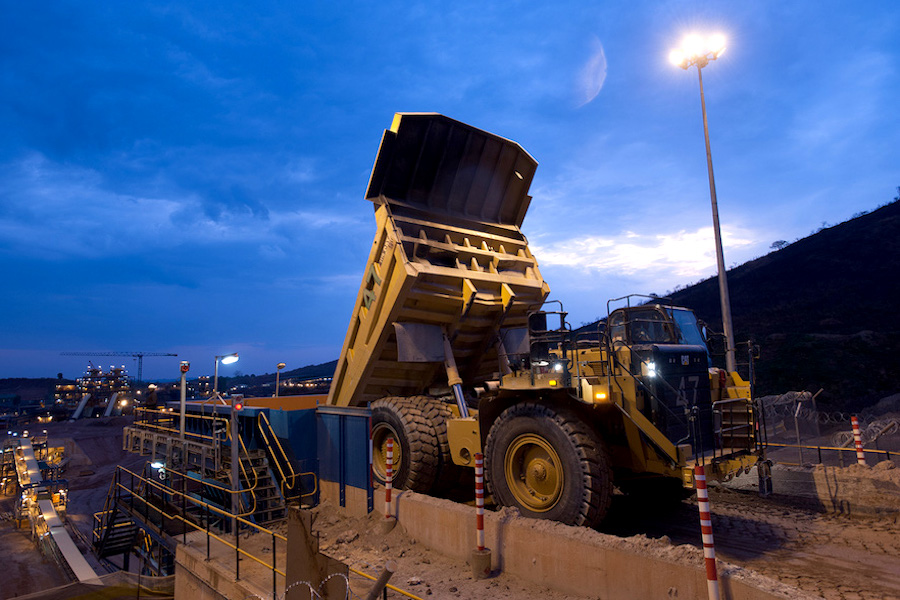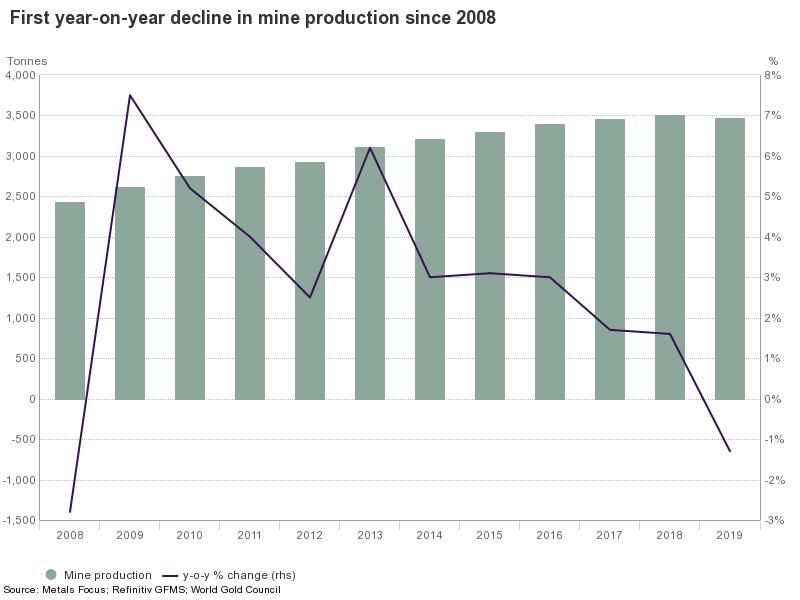
Global gold production is likely to keep falling, Barrick Gold (NYSE: GOLD, TSX: ABX) boss Mark Bristow said on Tuesday.
Bristow spoke at African Mining Indaba in Cape Town, the continent’s biggest gathering of one of its most vital industries.
In mid-January, the world’s second-largest gold miner announced preliminary full year results which indicate gold production of 5.5 million ounces, at the upper end of the 5.1 to 5.6 million ounce range.
Global mine production fell 2% in the final quarter of 2019 year-over-year to 889.5 tonnes.
Gold mine production totaled 3,463.7 tonnes in 2019, 1% lower than in 2018. This was the first annual decline in production since 2008.

Russian gold mine production saw an 8% increase in 2019. The ramp-up of greenfield sites – such as Natalka – and increases at several brownfield sites contributed to the growth in output.
In Australia, aggregate mine production rose by 3% owing to higher production at several mines and the ramp up of projects such as Mount Morgans and Cadia Valley.
Mine production in Turkey leapt 66% due to improvements in the regulatory environment and permitting process.
But this was outweighed by declines in some top producing nations. In China, the world’s largest producer, mine output fell 6% in 2019, the third consecutive year of decline.
Chinese gold production was hampered primarily by the strict environmental restrictions which have come into force in recent years.
The rising gold price also accelerated many gold mining plans in 2019. In South Africa, industrial action in the first half of the year significantly curtailed operations. While the strikes at Beatrix, Kloof and Driefontein – which began in November 2018 – ended in April, mine production continued to feel the after-effects well into Q3.
In South America, disputes between local communities and contractors – such as at Peñasquito in Mexico – also led to lower production compared to 2018.
But Indonesia had the biggest impact on global mine production in 2019 due to the activity at Grasberg. The exhaustion of higher-grade ore at Grasberg and its subsequent transition from open pit to underground mining was a constant issue throughout the year.
(With Bloomberg News)